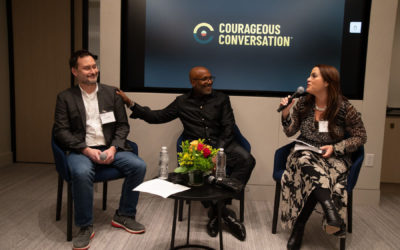By Cory Collins—Sept. 1 2018
Today, white privilege is often described through the lens of Peggy McIntosh’s groundbreaking essay “White Privilege: Unpacking the Invisible Knapsack.” Originally published in 1988, the essay helps readers recognize white privilege by making its effects personal and tangible. For many, white privilege was an invisible force that white people needed to recognize. It was being able to walk into a store and find that the main displays of shampoo and panty hose were catered toward your hair type and skin tone. It was being able to turn on the television and see people of your race widely represented. It was being able to move through life without being racially profiled or unfairly stereotyped. All true.
This idea of white privilege as unseen, unconscious advantages took hold. It became easy for people to interpret McIntosh’s version of white privilege—fairly or not—as mostly a matter of cosmetics and inconvenience.
Those interpretations overshadow the origins of white privilege, as well as its present-day ability to influence systemic decisions. They overshadow the fact that white privilege is both a legacy and a cause of racism. And they overshadow the words of many people of color, who for decades recognized white privilege as the result of conscious acts and refused to separate it from historic inequities.
In short, we’ve forgotten what white privilege really means—which is all of this, all at once. And if we stand behind the belief that recognizing white privilege is integral to the anti-bias work of white educators, we must offer a broader recognition.
A recognition that does not silence the voices of those most affected by white privilege; a recognition that does not ignore where it comes from and why it has staying power.
Having white privilege and recognizing it is not racist. But white privilege exists because of historic, enduring racism and biases. Therefore, defining white privilege also requires finding working definitions of racism and bias.
So, what is racism? One helpful definition comes from Matthew Clair and Jeffrey S. Denis’s “Sociology on Racism.” They define racism as “individual- and group-level processes and structures that are implicated in the reproduction of racial inequality.” Systemic racism happens when these structures or processes are carried out by groups with power, such as governments, businesses or schools. Racism differs from bias, which is a conscious or unconscious prejudice against an individual or group based on their identity.
Basically, racial bias is a belief. Racism is what happens when that belief translates into action. For example, a person might unconsciously or consciously believe that people of color are more likely to commit crime or be dangerous. That’s a bias. A person might become anxious if they perceive a black person is angry. That stems from a bias. These biases can become racism through a number of actions ranging in severity, and ranging from individual- to group-level responses:
- A person crosses the street to avoid walking next to a group of young black men.
- A person calls 911 to report the presence of a person of color who is otherwise behaving lawfully.
- A police officer shoots an unarmed person of color because he “feared for his life.”
- A jury finds a person of color guilty of a violent crime despite scant evidence.
- A federal intelligence agency prioritizes investigating black and Latino activists rather than investigate white supremacist activity.
Both racism and bias rely on what sociologists call racialization. This is the grouping of people based on perceived physical differences, such as skin tone. This arbitrary grouping of people, historically, fueled biases and became a tool for justifying the cruel treatment and discrimination of non-white people. Colonialism, slavery and Jim Crow laws were all sold with junk science and propaganda that claimed people of a certain “race” were fundamentally different from those of another—and they should be treated accordingly. And while not all white people participated directly in this mistreatment, their learned biases and their safety from such treatment led many to commit one of those most powerful actions: silence.
And just like that, the trauma, displacement, cruel treatment and discrimination of people of color, inevitably, gave birth to white privilege.
Read more at the Teaching Tolerance.




